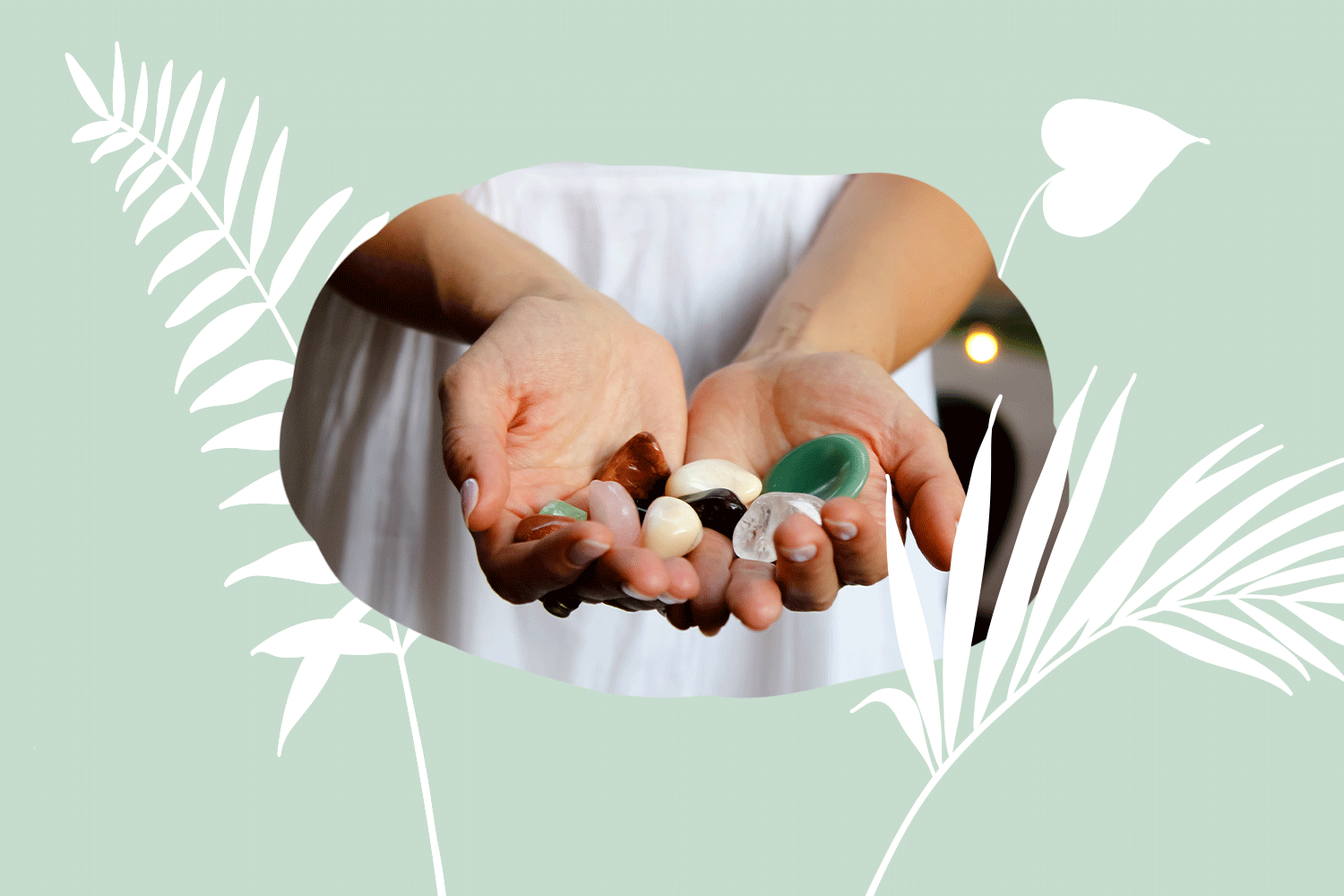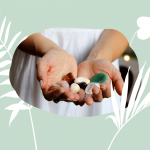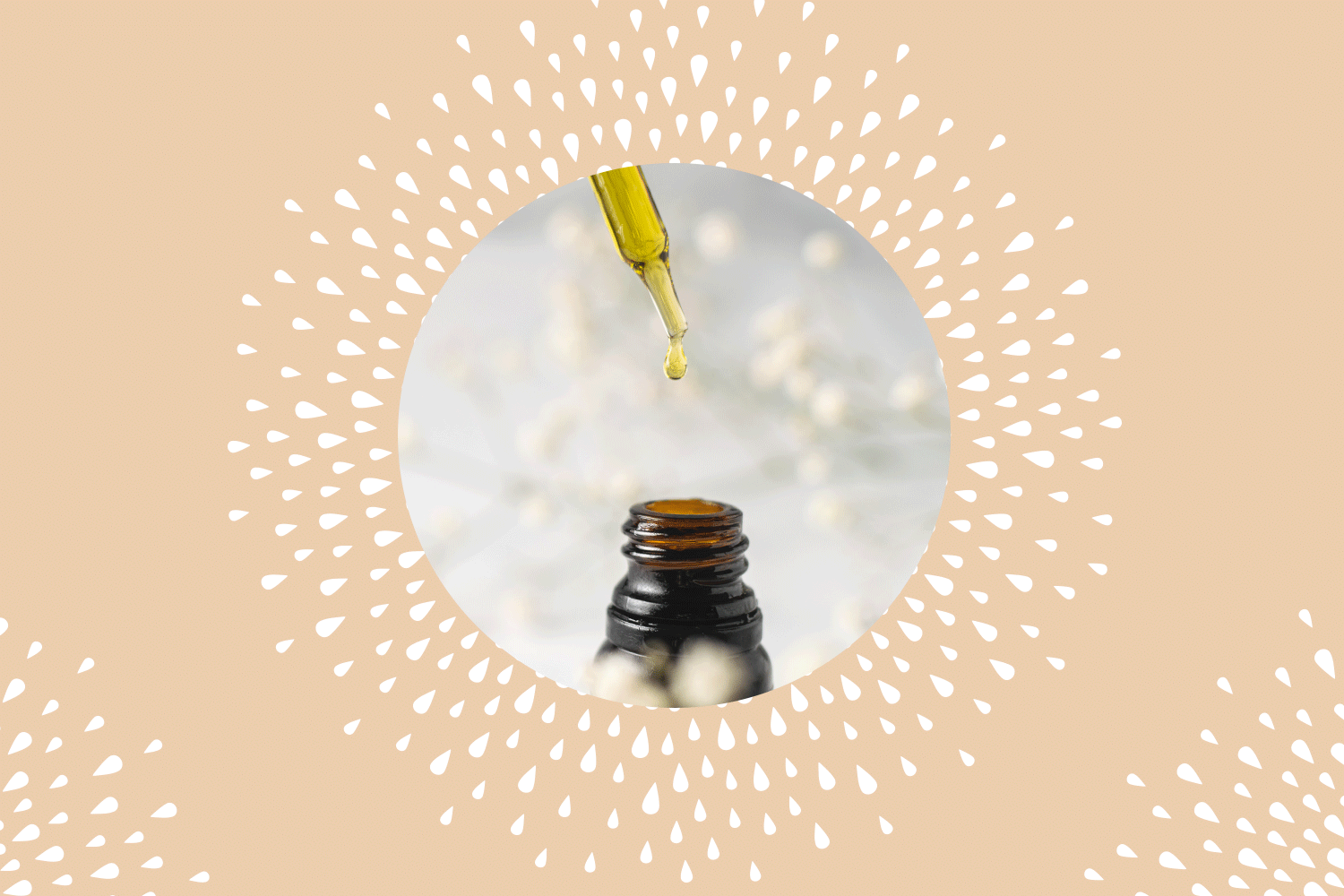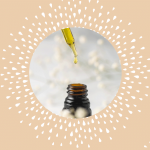Seed Cycling: Unlock Hormonal Balance & Menstrual Health Naturally

The ancient practice of seed cycling is an alternative medicine technique that many claim helps regulate hormones and influence fertility. This method of eating certain seeds, like pumpkin or flax, at different stages of your cycle to balance hormones has been practiced for hundreds of years, but there’s little scientific evidence to back it up. In this post we’ll dive into what seed cycling is, how to practice it, and the science behind it. Read on for everything you need to know about seed cycling benefits and how you can use it in your life.
What Is Seed Cycling?
Seed cycling is a naturopathic remedy that involves consuming different seeds at different points in your cycle for their hormone regulating properties. Proponents of this method claim that the unique combination of seeds helps support estrogen production during the first half of your cycle and promotes progesterone levels in the second half to balance your hormones.
Advocates claim that the benefits of consuming certain seeds at certain stages of your menstrual cycle can help regulate your hormones and thereby help with hormone related conditions like PCOS, fertility, and your period, among others.
The Benefits of Seed Cycling
Hormonal Balance and Menstrual Health
Hormones are the chemical messengers of our body and control everything from the physical characteristics we develop to our moods and most obviously our fertility. When you have too much of one, or too little of another, it can cause major impacts and even lead to certain conditions. Understanding how these hormones work together, and the impact they have on your health can be a major factor, especially if you are trying to conceive.
Many hormone imbalances are temporary but others can have long lasting consequences for your health. Nowhere is this more evident than with your menstrual health. When the hormones involved in your cycle are out of balance, the results can include conditions like irregular periods, PCOS, and infertility. Tracking your hormone levels can help in many ways – from exposing underlying health issues to helping you know the right time to have sex.
When it comes to your menstrual cycle, the basic idea of seed cycling is that certain seeds can enhance or diminish estrogen and progesterone, two of the main hormones involved in your cycle. These hormones follow a predictable path before ovulation each cycle and the changes in the two hormone levels are actually associated with ovulation.
In theory, by either promoting or inhibiting estrogen and progesterone production at certain phases of your cycle, you are balancing your hormones. When these hormones are balanced it should relieve any symptoms of hormonal imbalance you may have been experiencing. Seed cycling claims to alleviate hormone balance related symptoms and conditions like irregular periods, cramps, PMS, and PCOS.
Other Health Benefits
The benefits of seed cycling go beyond hormonal balance and your menstrual cycle and including them in your diet is good for your health. The seeds used are rich in vital nutrients like fiber, manganese, magnesium, copper, thiamine, vitamin E, and healthy fats. Not to mention their link to cholesterol and blood pressure levels, improved blood sugar control, and reduced inflammation. Pumpkin seeds benefits for females even include a link to protecting against breast cancer.
How Seed Cycling Works
Understanding the Menstrual Cycle
To understand the “science” behind seed cycling we must first understand the menstrual cycle and its phases. During each menstrual cycle, an egg develops and is released. The lining of the uterus builds up in anticipation of the egg being fertilized. If pregnancy doesn’t happen, the uterine lining sheds and this is your period. This cycle, divided into two phases, starts from the beginning and happens all over again.
The first phase is known as the follicular phase and takes place during day 1 through around 14 of your cycle, normally the follicular phase can last up to 21st cycle day. The follicular phase begins when your period starts and officially ends when you start to ovulate. During this phase, hormones are low but estrogen is starting to rise.
The second phase of this cycle is the luteal phase and starts right after ovulation and ends when your period starts. The luteal phase typically occurs on day 15 through 28 when progesterone begins to rise.
The benefits of seed cycling rely on how you are supporting estrogen and progesterone production during this time.
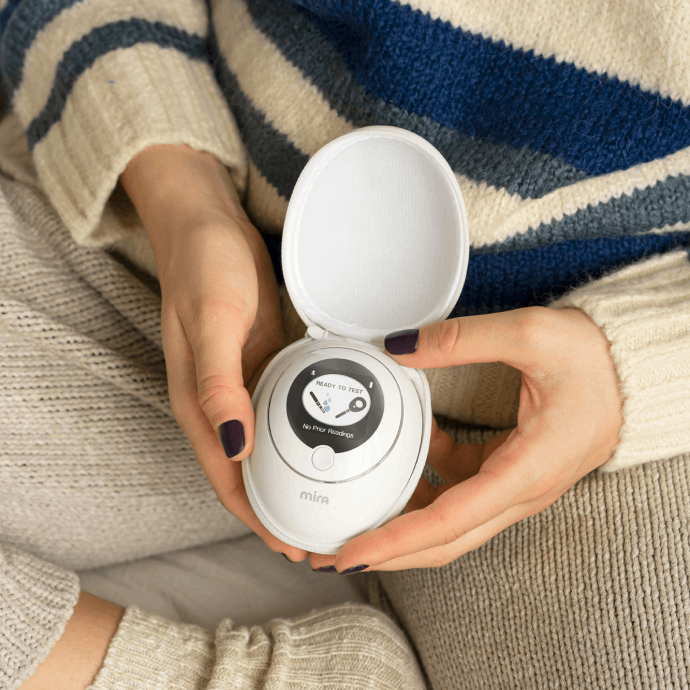
The Role of Seeds in Different Phases
(add here a seed cycling chart)
Seed balancing involves a specific combination of four seeds over the course of your menstrual cycle. This unique combination helps support estrogen production during the first
half of your cycle and promotes progesterone production during the second half. Pumpkin and flax seeds are used during the first half and sunflower and sesame seeds are used during the second half.
Follicular Phase (Day 1-14)
During the follicular phase of your menstrual cycle you consume both pumpkin and flax seeds to help improve estrogen levels and prevent excess estrogen.
Luteal Phase (Day 15-28)
During the luteal phase, the seed cycling protocol involves consuming sesame and sunflower seeds for their hormone balancing properties. Sunflower and sesame seeds are thought to support progesterone production as it increases during the luteal phase.
If you feel you are experiencing from issues related to hormone imbalance it can be hard to know where to start. Side effects of a hormonal imbalance include painful cramps, hormonal acne, irregular periods, and hair growth to name a few.
If you aren’t tracking your cycle, there are many benefits to doing so. Using Mira’s fertility kit can help you check your hormones during each phase and spot any imbalances that seed cycling could potentially fix.
Selecting the Right Seeds
Flaxseeds and Pumpkin Seeds for the Follicular Phase
The combination of zinc and magnesium found in pumpkin seeds combats PMS and other annoying aspects of hormone imbalance. While magnesium helps with PMS symptoms, zinc is a powerhouse. Pumpkin seeds contain 15% of the RDA (recommended dietary allowance) per ounce. Menstrual cramps and inflammation are caused by prostaglandins and zinc works to help reduce the metabolism of prostaglandins, encouraging more oxygen flow to the uterus and reducing the occurrence of menstrual cramps. It has also been noted that zinc can reduce the severity of menstrual blood flow.
Flax seeds work alongside pumpkin in the first phase of your cycle to remove excess hormones, reduce inflammation and aid in the reduction of painful PMS cramps. Although more research is needed, flax and menstruation have been studied and a positive link has been found between the two. These seeds contain a powerful three-fold punch. They will help regulate estrogen quantity. During reproductive years, women’s bodies contain a compound called estrogen. Lignans act similarly to estrogen, too, but they don’t stimulate reproductive issues. When our bodies overproduce estrogen, lignans compete with a woman’s own estrogen and regulate the quantity by keeping it in balance. This balancing action is due to lignans ability to competitively lock onto our estrogen reception sites.
Sunflower Seeds and Sesame Seeds for the Luteal Phase
Sesame seeds have been shown to modulate inflammation and support cholesterol metabolism. Sesame seeds contain zinc and selenium, which work to block excess estrogen. Sesame seeds have also been shown to modulate inflammation and support cholesterol metabolism. Given that sex hormones are made from cholesterol, any influx in inflammation can cause a response from the adrenal gland, which can lead to a hormone imbalance.
Sunflower seeds are paired with sesame seeds during the second phase and contain Vitamin E, which helps to boost progesterone levels and combat inflammation. They contain iron, magnesium, and vitamin E but be wary of sunflower seeds’ side effects for females. You may have an allergic reaction to them and remember they are high in calories so be mindful of the quantity you consume.

A little extra support from an expert can go a long way
Book an online consultation with one of our Hormone Health Coaches.
Schedule NowDaily Seed Cycling Plan
So how do you start seed cycling and what does the protocol entail? Here are the details of how to incorporate this routine into your life and how much of each seed to use during each phase.
How Much to Consume Daily
Follicular Phase (Days 1-14)
- 1-2 tablespoons ground pumpkin seeds
- 1-2 tablespoons ground flax seeds
Luteal Phase (Days 15-28)
- 1-2 tablespoons ground sunflower seeds
- 1-2 tablespoons ground sesame seeds
During the follicular phase of your cycle (menstruation to ovulation) incorporate 1-2 tablespoons of ground pumpkin and flax seeds daily. Once you ovulate, you are in the luteal phase of your cycle (ovulation to menstruation) and switch to sunflower and sesame seeds.
Ovulation is a key milestone of your menstrual cycle and tracking ovulation patterns can be helpful not only with seed cycling but also to know more about your reproductive health. The timing of your cycle varies greatly among individuals so if you don’t know when you ovulate or have irregular cycles, it can be hard to know where your hormones are at from symptoms alone. One of the most accurate ways to track and predict ovulation is by tracking your hormones directly. With Mira, you can track key hormone levels with precise daily readings and monitor your hormonal map over time.
Creative Ways to Include Seeds in Meals
There are many different ways you can incorporate these seeds into your diet. From sprinkling them on toast to adding them to smoothies, you can get creative with how you use the seeds. You can even make seed specific recipes like homemade granola, seed butter, or pesto with pumpkin and flax seeds. They can be added to salads, smoothies, nutrition bowls or anything else that works.
Common Challenges and How to Overcome Them
If you’re new to eating seeds it can be hard to know where to start but by incorporating them into your daily routine and adding them to your diet in creative ways, you can be on your way to realizing the benefits of seed cycling.
With a little ingenuity, there are many creative ways you can add seeds to meals and snacks. They can be sprinkled on top of just about anything including salads, yogurt, nutrition bowls, cereal, and hummus. Or you can try adding them as a crunchy topping on toast, or as an ingredient in smoothies. Another way to get seeds into your diet is to include them as an ingredient in energy bites, add them to trailmix, or sneak them into recipes like cookies or granola bars.
You can try adding seeds to just about any recipe that works. For instance, elevate your roasted veggies by sprinkling seeds on top for a crunchy finish. Popular recipes and meal ideas for seed cycling include granola, smoothies, and oats. You can even make your own nut butter!
Remember though, what we put in our bodies matters, it’s important to get seeds of the best quality. This means sourcing high-quality, organic seeds for the protocol. Using organic seeds helps reduce any exposure to hormone disrupting pesticides or agricultural chemicals.
Avoiding potential allergies or sensitivities to seeds
Always proceed with caution if you’ve had an allergic reaction to something containing nuts or seeds. Some people are hypersensitive to common edible seeds including pumpkin, sunflower, and sesame among others. Symptoms can vary from mild to severe and can even be life threatening like anaphylaxis.
Evidence Supporting Seed Cycling
Seed cycling for hormones proposes that the menstrual cycle can be regulated by balancing estrogen and progesterone. Through the actions of phytoestrogens, zinc, selenium, and vitamin E found in specific seeds, you can naturally balance the hormones of your cycle.
The theory is that different seeds promote or inhibit hormone production so that more or less of those hormones are present during certain phases of your menstrual cycle. During an estrogen-dominant phase you use seeds that support the production of that hormone. Whereas during the progesterone-dominant phase you use seeds to support that production.
Research is incredibly limited in this area and there is little scientific evidence to support a direct relationship. While there is limited evidence available to show a clear link, there is evidence that these specific seeds may play a role in supporting your hormones.
Phytoestrogens have a weak estrogen-like effect and may support natural estrogen production and lingans (a nutritional component) can help with excess estrogen. Some research has shown that flax seeds can help improve ovulation and reduce common PMS symptoms. While other research has shown that the high level of zinc found in pumpkin and sesame seeds may help the corpus luteum, a structure in the ovary responsible for progesterone production.
Criticisms and Controversies
Most studies on seed cycling or the effects of individual seeds are small and far from conclusive. It is seen as alternative medicine, and although the practice of seed cycling for fertility has been around for hundreds of years, the science is very limited. However, the seeds themselves are healthy components to include in your diet and there may be other health benefits (like increased fiber). There may not be any real data or science to back up the claims of seed cycling, but there is no serious risk or harm to including them in your diet.
If you are experiencing a hormonal imbalance, but you’re not pregnant or undergoing puberty or menopause, this may be a sign of an underlying health condition. For example, polycystic ovarian syndrome (PCOS), can cause disruption to your hormone levels. Other potential causes include stress, trauma, disease, and being over/underweight.
How to Track Your Progress
Monitoring Menstrual Health
If you’re making a change, like adding a seed cycling routine to your life, you’ll want to know whether it’s working or not. One of the simplest ways to do this is by tracking and monitoring your progress. One of the easiest ways to do this is by documenting your efforts. Try keeping a journal to note symptoms and side effects can help keep you on track and be a powerful motivator for progress.
Our hormones are like fingerprints and we all have different levels, so it can be helpful to find out your specific levels. A hormone tracking device like the Mira Fertility Tracker can help you get a complete, personalized picture with your unique patterns. Mira tracks key fertility hormone concentrations – luteinizing hormone (LH), estrogen (E3G), FSH and progesterone (PdG) – to give you personalized insights into your cycle.
You may be able to gain a better perspective on your hormones through a single at-home lab test like Mira’s Panorama Fertility Lab Test. This convenient kit tests 5 hormones that affect your ovulation, cycle regularity, and ability to get pregnant and can help identify hormonal imbalance signals. You get 5 individual and personalized hormone reports with actionable steps to understand what those numbers mean for your fertility health. You can even show these reports to your healthcare provider to help with any treatment.
Using Journals and Apps to Track Changes
Since seed cycling aims to balance hormones and regulate your cycle, keeping a menstrual cycle diary will be helpful data to monitor your progress. This can be low tech in the form of a simple notebook or higher tech through various apps and programs. Mira offers a free period tracking app that can also keep track of your hormone data when you use our testing wands. Unlike other apps, your data is safe with us and never shared or sold.
By tracking your menstrual cycle as well as any symptoms, you can gain a better understanding of how seed cycling is working for you. Looking back at the data can help you monitor your progress and see any improvements based on the information you’ve provided.
Final Thoughts
It’s always a good idea to check in with your healthcare provider or doctor to discuss any questions or concerns you have before starting something like seed cycling. They can tailor their answers to your specific health concerns. It never hurts to be proactive, especially where fertility is concerned.
Mira’s Editorial Process
All content produced by Mira meets stringent editorial standards, ensuring excellence and accuracy in language and medical precision. Every piece undergoes thorough fact-checking and review by qualified professionals. Check out our full editorial process to learn more.




